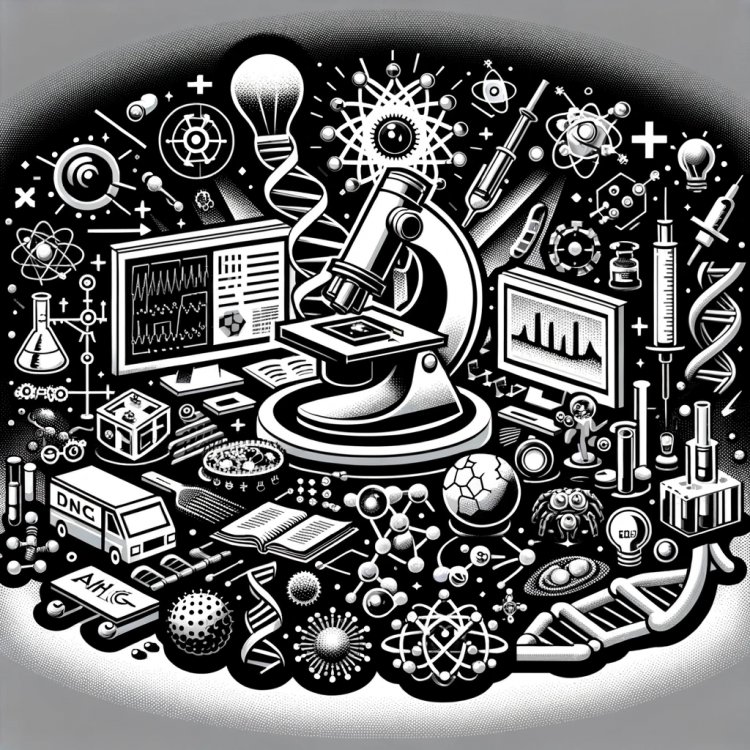Welcome to the captivating world of nanoscience, a realm where scientists and researchers delve into the infinitesimally small to unlock massive potential. This blog post aims to explore the fundamentals of nanoscience, its groundbreaking applications, and the future it holds.
What is Nanoscience?
Nanoscience is the study of structures and materials on the scale of nanometers – to put it in perspective, one nanometer is a billionth of a meter. This is the scale of atoms and molecules, the fundamental building blocks of our world. Nanoscience is an interdisciplinary field that converges physics, chemistry, biology, and engineering, all working together to understand and manipulate matter at this nano level.
The Birth of a New Science
The concept of manipulating matter at an atomic or molecular scale was first proposed by physicist Richard Feynman in his famous 1959 lecture, “There’s Plenty of Room at the Bottom.” However, it wasn't until the invention of tools like the Scanning Tunneling Microscope (STM) and the Atomic Force Microscope (AFM) in the 1980s that nanoscience truly began to flourish.
Exploring the Nano World
At the nanoscale, materials exhibit properties that are distinct from their larger counterparts. These unique properties are due to the increased surface area relative to volume and the dominance of quantum effects. For instance, gold at the nanoscale can appear red or purple and has different melting points.
Applications of Nanoscience
Medicine: A New Frontier
Nanoscience is revolutionizing medicine. Nanoparticles are being used for targeted drug delivery, specifically delivering medicine directly to cancer cells, thereby reducing side effects and improving treatment efficacy. Nanotechnology is also paving the way for advanced diagnostic tools and regenerative medicine, like repairing damaged tissues at the cellular level.
Environment: Solutions for Sustainability
Nanotechnology offers promising solutions for environmental sustainability. Nanomaterials are being used for water purification, air filtration, and even in solar cells, improving the efficiency of converting solar energy to electricity. Nanosensors are being developed to detect pollutants at incredibly low concentrations.
Electronics: Smaller, Faster, More Efficient
The field of electronics has been profoundly impacted by nanoscience. Transistors, the building blocks of all electronic devices, have shrunk to nanoscale, leading to more powerful and energy-efficient computers and smartphones. Nanophotonics, the study of light on the nanometer scale, is leading to the development of high-speed, high-capacity optical communication systems.
The Future of Nanoscience
The potential of nanoscience is vast and not entirely predictable. As we continue to understand and manipulate matter at this fundamental level, the possibilities seem limitless.
Ethical and Safety Considerations
As with any advancing technology, nanoscience brings its set of ethical and safety concerns. The impact of nanoparticles on health and the environment is still a subject of ongoing research. It's crucial to ensure responsible development and use of nanotechnology.
The Next Big Thing is Tiny
Nanoscience is poised to drive the next wave of technological innovation. Whether it’s in creating more effective medicines, building faster computers, or developing sustainable solutions for the environment, the key might lie in the smallest of scales.
Conclusion
Nanoscience is more than just a scientific field; it’s a gateway to the future. The ongoing research and discoveries in this domain have the potential to solve some of the most pressing challenges faced by humanity. As we continue to explore this tiny, yet immensely powerful, world, one thing is certain – the impact of nanoscience will be anything but small.
Nanoscience is an ever-evolving field, and staying updated with the latest developments can be as thrilling as it is enlightening. Whether you're a student, a professional, or just a curious mind, the journey into the nano world is sure to be a fascinating one.















